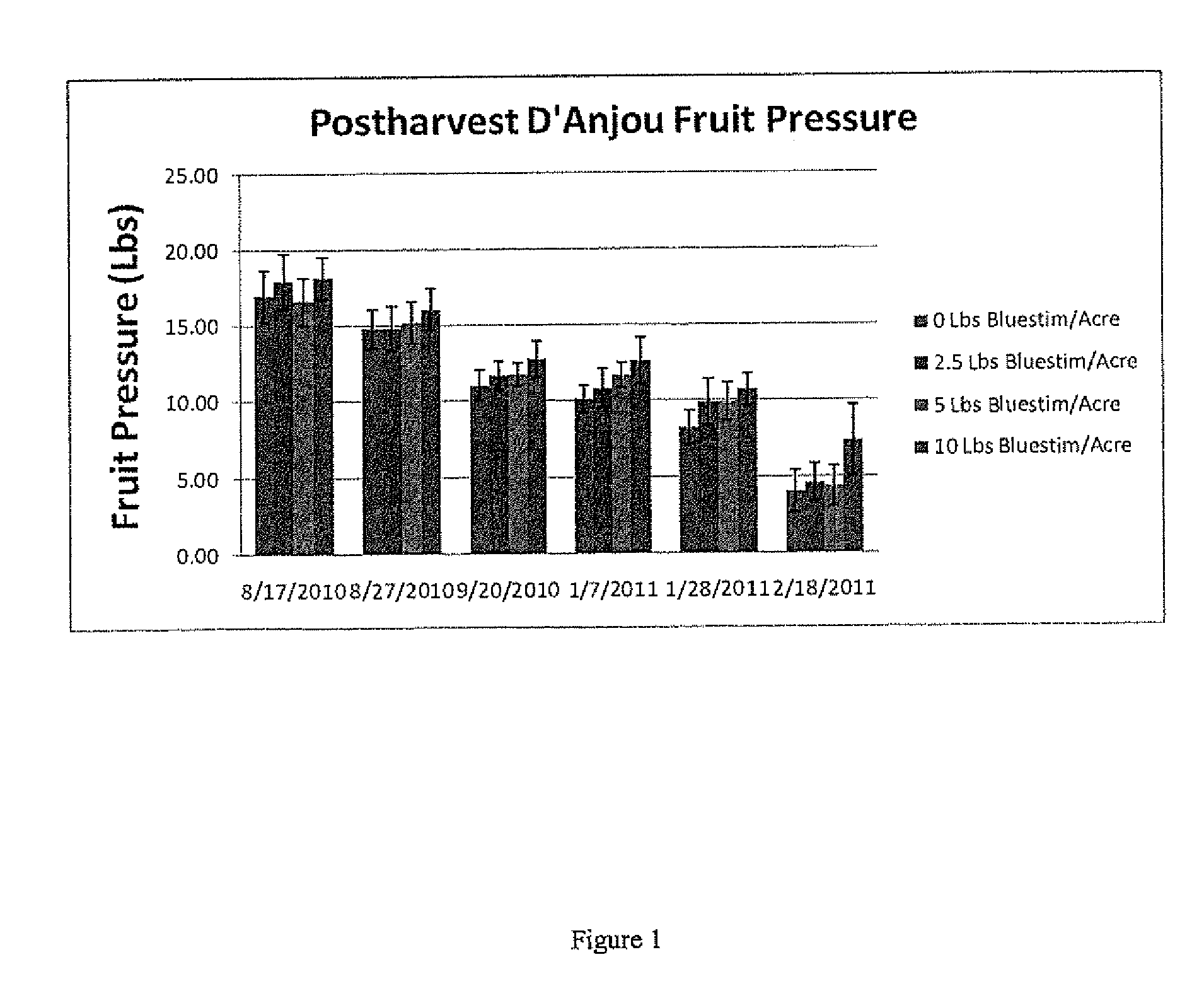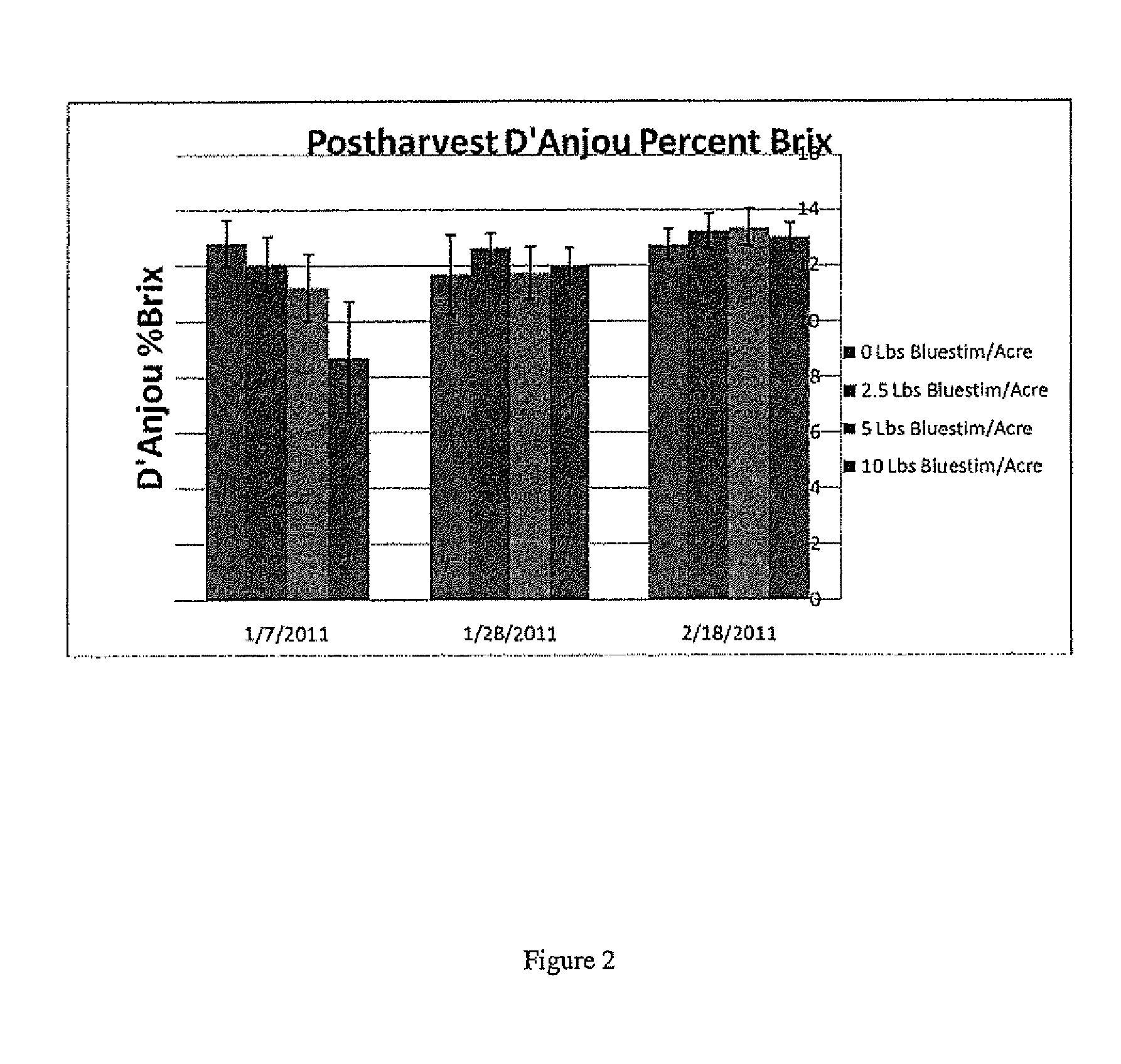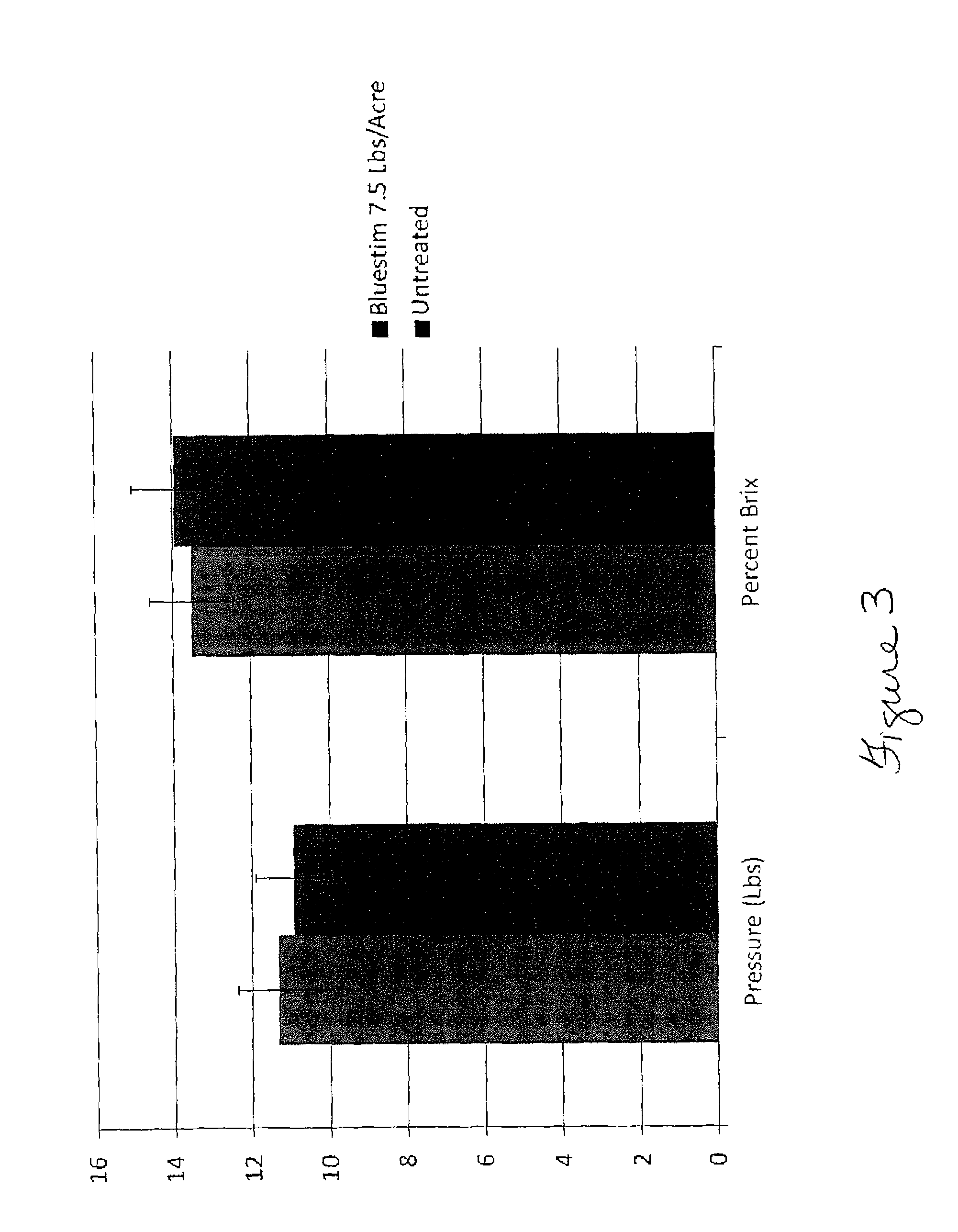Use of photosynthetic pigment stabilizing agents to regulate ripening and quality in fruits and vegetables
a technology of photosynthetic pigment and stabilizing agent, which is applied in the direction of biocide, milk preservation, peptide/protein ingredients, etc., can solve the problems of affecting the ripening of fruits and vegetables, wanes of the effect of 1-mcp treatment, and certain fruits that do not respond well to 1-mcp treatment, so as to prevent or slow the onset of senescence and prolong the time period
- Summary
- Abstract
- Description
- Claims
- Application Information
AI Technical Summary
Benefits of technology
Problems solved by technology
Method used
Image
Examples
example 1
[0056]Research described in this Example shows that application of a natural byproduct of molasses, glycine betaine, to d'Anjou pears before harvest yields firmer pears compared to untreated pears stored in the same post-harvest conditions (FIGS. 1 and 3). Application increased the fruit firmness in a dose dependent manner, with applications of 10 lbs / acre yielding the firmest pears.
[0057]Glycine betaine treated pears also display a decrease in soluble sugars measured in % BRIX in a dose dependent manner (FIGS. 2 and 3). Both firmness and % BRIX are used as an indicator of fruit ripeness.
[0058]As time passes, however, glycine betaine treated pears soften and exhibit increases in % BRIX, indicating that the effect is temporary, and that ripening eventually occurs after treatment.
PUM
| Property | Measurement | Unit |
|---|---|---|
| soluble | aaaaa | aaaaa |
| concentrations | aaaaa | aaaaa |
| pressure | aaaaa | aaaaa |
Abstract
Description
Claims
Application Information
 Login to View More
Login to View More - R&D
- Intellectual Property
- Life Sciences
- Materials
- Tech Scout
- Unparalleled Data Quality
- Higher Quality Content
- 60% Fewer Hallucinations
Browse by: Latest US Patents, China's latest patents, Technical Efficacy Thesaurus, Application Domain, Technology Topic, Popular Technical Reports.
© 2025 PatSnap. All rights reserved.Legal|Privacy policy|Modern Slavery Act Transparency Statement|Sitemap|About US| Contact US: help@patsnap.com



